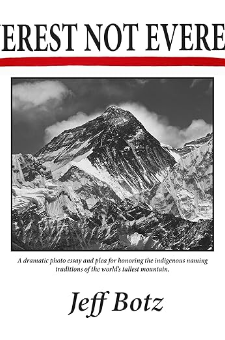
Category: General Nonfiction
Regular price: $0.99
Deal price: Free
Deal starts: September 17, 2024
Deal ends: September 18, 2024
This book is a classical photo essay about the Himalayas but even more than that it is a love letter to those mountains, the people and culture of the land surrounding the world’s tallest mountain. This is not another collection of travel, documentary or adventure photos but a personal, poetic visual response to one of ther world’s most dramatic landscapes.The photos in the collection were made with the same large format film technology that was used in the late nineteenth and early twentieth century to illustrate the untamed American west and other remote lands around the world. Unfortunately that Era of Exploration photography could not access the Himalayas because the borders of Nepal and Tibet were closed to all foreigners so the classic photos were never made. I started this photo mission using the 35mm color format but found it too reductionistic to capture and express the majesty and grandeur of the mountains or the aura of spirituality which has characterized the area since time immemorial.Working particularly in the style of Ansel Adams using black and white film and the clunky 8x10” film camera, I have strived to create landscape photographs that transcend documentation and travelogue. Like the great masters of the two dimensional mountain imagery, Caspar David Friederich, Albert Bierstadt, Frederich E. Church and Ansel Adams, it is my intention to invoke associations and metaphors of inspiration, personal challenge, struggle, achievement and self realization as well as suggest these mountains as forget-me-nots of the Creator/Universal Life Force.“I’ve seen a lot of photography of natural wonders and little of it moves me. I suppose, like most of us, my sensibilities have been dulled by the National Geographic easthetic of what I might call the “informative sublime.” Remarkably, the best of your[Mr. Botz] images transcend that model.”John CoffeyCurator of American and Modern ArtNorth Carolina Museum of ArtThe essay should be considered as part of the post modern critique in that it rejects the validity of the 1857 British naming of the world’s tallest mountain which existed on the border of two sovereign countries, Nepal and Tibet, neither of which would even permit the British to enter. This naming as an honor to George Everest is simply another example of ninteenth century British colonial plunder which today represents a subtle injustice and financial loss to both Nepal and the Chinese Autonomous Region of Tibet. I end the essays encouraging readers to honor the indigenous people and cultures by using the local names Sagarmatha(Nepal) and Qomolungma(Tibet, China).